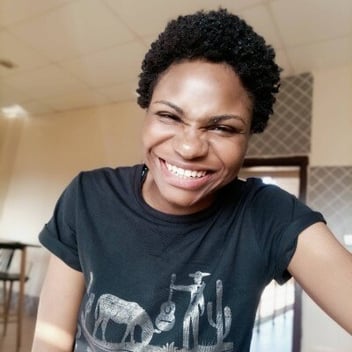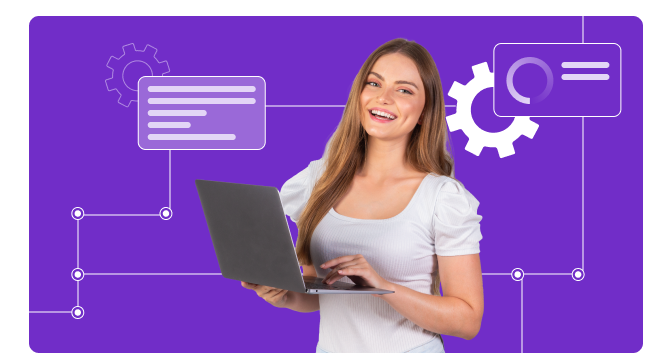Codacy Pioneers: A Random WhatsApp Scroll Turned Life-Changing
.webp?width=1740&height=876&name=Launch-article-pioneers@2x-1%20(1).webp)
So, there I was, just scrolling through WhatsApp, doing nothing particularly productive—you know, chilling.
Then I noticed that Ruth Ikegah had shared something interesting: an opportunity for Open Source (OS) contributors. I clicked on it, gave it a quick glance, and moved on.
A few moments later, someone referenced it in another conversation, and curiosity got the better of me. I decided to really check it out this time.
Before I knew it, I was applying. Honestly, I didn’t fully understand what the opportunity meant at first.
I just knew OS excited me, and the idea of getting $500/month for contributions sounded amazing! For me, Open Source has always been about creating or contributing to tools that genuinely help people.
The thought of getting paid to do something I loved? That was a game-changer.
How It All Started: From Biochemistry to Code
Let’s rewind for a moment.
Hi, I’m Alex, and no, I don’t have a traditional engineering background. I studied Biochemistry, of all things.
After school, I used to hang out at a photography studio because I loved photography and cinematography.
One day, I noticed this guy typing furiously on his PC. His screen was this weird yellowish color with text that looked straight out of a spy movie.
I couldn’t help myself: I casually asked, “Hope you’re not hacking all our phones?” To my surprise, he gave me a three-second glare filled with disdain and moved seats without saying a word.
Rude? Yes. Intriguing? Absolutely. That moment stuck with me and sparked my curiosity.
Fast forward a few years, and I got a chance to work at my school’s ICT center. That’s where I learned about this magical term “software engineering.” And just like that, my journey began.
I started teaching myself how to code.
And after 2.5 years, a painfully long and slow JavaScript learning curve and two intense (6-8 month) internships, I landed my first paid Software Engineering role.
It blew my mind how much I could do with code, and it only made me hungrier to learn more.
My First Steps into Open Source
As I dove deeper into tech, I wanted to build tools—tools that could help devs like me.
I remember telling some friends about my first tool idea, and someone casually asked, “Is it Open Sourced?” Wait, hold up. What’s Open Source?
That question opened the doors to a whole new world for me. I learned that I could not only build my own tools but also let others contribute to them.
Better yet, I could contribute to tools I used daily. Of course, my first attempt at contributing was… let’s say, humbling.
I couldn’t even figure out what was going on in the codebase, let alone make a meaningful contribution.
That’s when I decided to start documenting OS codebases to make it easier for others like me to get involved.
And so, I kept contributing. And documenting. And learning.
The Moment It All Came Together
Fast forward to October 17, 2023. I got an email from Heloisa, from Codacy. And not just any email—I was selected as one of the 13 global pioneers for the Codacy Pioneer Fellowship Program.
I was thrilled! But the icing on the cake? I found out I was the only female in the cohort. It felt surreal to be part of such an incredible program.
A few hours after my birthday, I received the Slack invite. Best. Birthday. Present. Ever!
Shortly after, the GitHub sponsor notification popped up, and it started to feel real. Really real.
After our onboarding call, I met Cormac Dunne, my interviewer and the person tasked with capturing my OS journey.
Our first interview on November 9 was an absolute blast!
Through this program, I got to work with top OS contributors, hear their stories, and learn from their experiences. It was inspiring, to say the least.
Building Codetivite: A Dream in Motion
At the time, I had just started my startup—Codetivite. It’s a platform designed to improve the employability of techies by giving them opportunities to solve real-world problems.
One of our biggest goals was to address a common problem: what happens after a bootcamp or internship? Too often, people finish these programs and are left in limbo. We wanted to create an Open Source-driven continuity program.
So, we launched Codetivite and opened applications for our first internship program. In just 10 days, we received an overwhelming 621 applicants!
The support from the Codacy program was instrumental in helping us bootstrap the funds and knowledge we needed to get started.
Our plan was simple: test our learning program, refine it based on student feedback, and then funnel participants into contributing to Open Source projects and building public goods.
It’s a win-win: students gain real-world experience while solving global problems and building in public.
Wrapping Up One Chapter, Opening Another
Every great thing must come to an end.
The Codacy Fellowship pushed me further to my goal of helping people become more employable and I really hope more initiatives like this come up.
My time as a Codacy Pioneer may be over, but it’s only the beginning for Codetivite. Our first program was a success, and we’re gearing up for more in 2025.
Most importantly, we’re looking to partner with passionate OS contributors who want to be the face of the Codetivite OS Continuity Program.
The journey has been incredible, and I can’t wait to see where it leads next.
To anyone reading this: if you’re curious about Open Source or wondering how to start, take it from me—just dive in. You never know where it might take you.
.svg)


